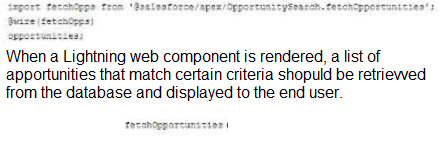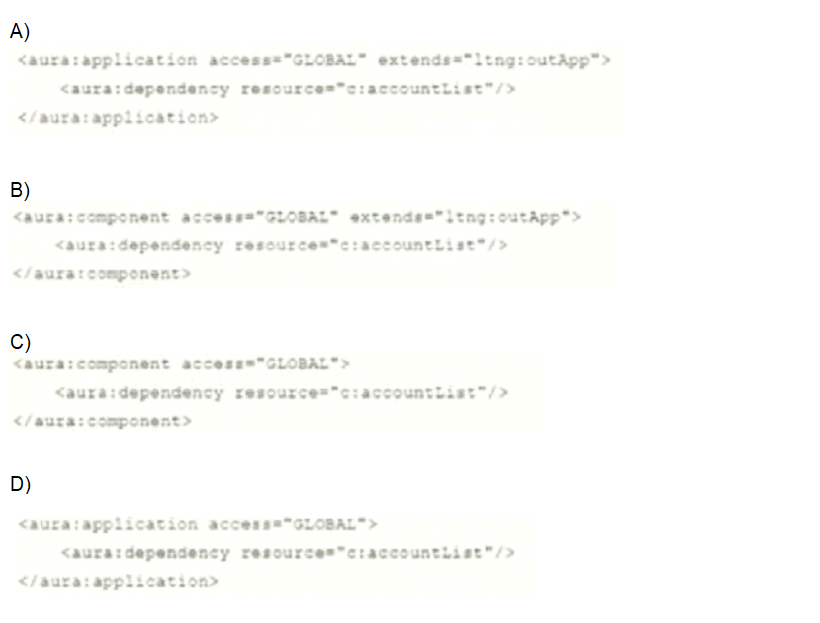Total 237 Questions
Last Updated On : 2-Jun-2025
Preparing with PDI practice test is essential to ensure success on the exam. This Salesforce SP25 test allows you to familiarize yourself with the PDI exam questions format and identify your strengths and weaknesses. By practicing thoroughly, you can maximize your chances of passing the Salesforce certification spring 2025 release exam on your first attempt. Surveys from different platforms and user-reported pass rates suggest PDI practice exam users are ~30-40% more likely to pass.
What are two considerations for running a flow in debug mode? Choose 2 answers
A. Callouts to external systems are not executed when debugging a flow.
B. Clicking Pause or executing a Pause element closes the flow and ends debugging.
C. Input variables of type record cannot be passed into the flow,
D. DML operations will be rolled back when the debugging ends.
Explanation:
- Callouts to external systems are not executed when debugging a flow because the debug mode runs in a controlled environment where external interactions are prevented.
- DML operations (such as inserts, updates, and deletes) are rolled back when debugging ends, ensuring that test runs do not affect actual data.
A developer Is asked to create a Visualforce page that lists the contacts owned by the current user. This component will be embedded In a Lightning page. Without writing unnecessary code, which controller should be used for this purpose?
A. Standard list controller
B. Standard controller
C. Lightning controller
D. Custom controller
Explanation:
Standard list controllers are used when you need to display a list of records (like Contacts). Since the requirement is to list contacts owned by the current user, and there's no mention of custom logic, a standard list controller for the Contact object is the most efficient and appropriate choice.
It provides built-in pagination, filtering, and sorting without the need for custom Apex code.
This is ideal for use cases where basic list display is enough, especially when embedding into a Lightning page.
Other options:
B. Standard controller: Used for a single record, not a list.
C. Lightning controller: This is not a standard Visualforce option—confusing terminology.
D. Custom controller: Unnecessary unless you need custom logic, which this question does not require.
Refer to the code snippet below:
Which three Considerations must the developer implement to make the method available within the Lightning web component? Choose 3 answer
A. The method must specify the (cacheable-trun) attribute
B. The method must specify the (continuation-true) attribute
C. The method must be annotaled with true Invocablemethod annolation
D. The method cannot mutate the result set retrieved from the database.
E. The method must be annotated with the AureEnabled annolation
Explanation:
- @AuraEnabled is required to expose an Apex method to Lightning Web Components (LWC). Without it, the method cannot be accessed from LWC.
- cacheable=true is necessary if the method is used with the @wire decorator in LWC, allowing efficient data retrieval and caching.
- The method cannot mutate the result set retrieved from the database because cacheable=true requires the method to be read-only, meaning it cannot modify data.
What are two benefits of using External IDs? Choose 2 answers
A. An External ID field can be used Co reference an ID from another external system.
B. An External ID can be a formula field to help create a unique key from two fields in Salesforce.
C. An External ID can be used with Salesforce Mobile to make external data visible.
D. An External ID is indexed and can improve the performance of SOQl quenes.
Explanation:
- External IDs help integrate Salesforce with external systems by allowing records to be referenced using an identifier from another system rather than the Salesforce record ID.
- External IDs are indexed, which improves query performance when searching for records using SOQL.
Which two sfdx commands can be used to add testing data to a Developer sandbox?
A. Forced: data:bulk:upsert
B. Forced: data: object :upsert
C. Forced: data: tree: upsert
D. Forced: data:async:upsert
Explanation:
force:data:bulk:upsert (A)
Bulk upserts data from a CSV file into a Developer sandbox.
Ideal for large datasets (uses Bulk API for efficiency).
force:data:tree:import (C)
Imports hierarchical data (e.g., parent-child records) from a JSON file.
Maintains relationships between records during insertion.
Universal Container(UC) wants to lower its shipping cost while making the shipping process more efficient. The Distribution Officer advises UC to implement global addresses to allow multiple Accounts to share a default pickup address. The Developer is tasked to create the supporting object and relationship for this business requirement and uses the Setup Menu to create a custom object called "Global Address". Which field should the developer ad to create the most efficient model that supports the business need?
A. Add a Master-Detail field on the Account object to the Global Address object
B. Add a Master-Detail field on the Global Address object to the Account object.
C. Add a Lookup field on the Account object to the Global Address object.
D. Add a Lookup field on the Global Address object to the Account object
Explanation:
- A Lookup relationship is the best choice when multiple Accounts need to reference a single Global Address.
- This allows many Accounts to share the same default pickup address, ensuring efficiency in shipping operations.
- A Master-Detail relationship would not be ideal because it enforces strict ownership and deletion dependencies, which are unnecessary for this use case.
- The Lookup field should be placed on the Account object, linking it to the Global Address object, so each Account can reference a shared address.
A developer has a Visualforce page and custom controller to save Account records. The developer wants to display any validation rule violation to the user. How can the developer make sure that validation rule violations are displayed?
A. Add cuatom controller attributes to display the message.
B. Include
C. Use a try/catch with a custom exception class.
D. Perform the DML using the Database.upsert() method.
Explanation:
- When using a custom controller, validation rule errors do not automatically display like they do with standard controllers.
- To ensure validation errors appear on the Visualforce page, the developer should use Database.upsert() instead of DML operations like insert or update.
- The Database.upsert() method returns a Database.SaveResult object, which allows the developer to capture errors and display them using ApexPages.addMessages().
Universal Containers wants to ensure that all new leads created in the system have a valid email address. They have already created a validation rule to enforce this requirement, but want to add an additional layer of validation using automation. What would be the best solution for this requirement?
A. Submit a REST API Callojt with a JSON payload and validate the f elds on a third patty system
B. Use an Approval Process to enforce tne completion of a valid email address using an outbound message action.
C. Use a before-save Apex trigger on the Lead object to validate the email address and display an error message If it Is invalid
D. Use a custom Lightning web component to make a callout to validate the fields on a third party system.
Explanation:
- A before-save Apex trigger is the most efficient way to enforce additional validation beyond standard validation rules.
- It allows the developer to check the email format using regular expressions or other logic before the record is committed to the database.
- If the email is invalid, the trigger can prevent the record from being saved and display an error message to the user.
trigger LeadTrigger on Lead (before insert, before update) {
for (Lead l : Trigger.new) {
if (l.Email != null && !Pattern.matches('^[A-Z0-9._%+-]+@[A-Z0-9.-]+\\.[A-Z]{2,}$',
l.Email.toUpperCase())) {
l.Email.addError('Please enter a valid email address.');
}
}
}
Which Lightning code segment should be written to declare dependencies on a Lightning component, c:accountList, that is used in a Visualforce page?

A. Option A
B. Option B
C. Option C
D. Option D
Explanation:
Purpose: To use a Lightning component (c:accountList) in a Visualforce page, you must declare it in a Lightning Out dependency app.
Key Requirements:
extends="ltng:outApp": Required to enable Lightning components in Visualforce.
access="GLOBAL": Ensures the app is accessible to Visualforce.
Cloud kicks has a multi-screen flow that its call center agents use when handling inbound service desk calls. At one of the steps in the flow, the agents should be presented with a list of order numbers and dates that are retrieved from an external order management system in real time and displayed on the screen. What should a developer use to satisfy this requirement?
A. An Apex controller
B. An Apex REST class
C. An outbound message
D. An invocable method
Explanation:
- Since the order numbers and dates need to be retrieved in real time from an external system, an Apex REST class is the best approach.
- Apex REST classes allow Salesforce to make callouts to external APIs, fetching data dynamically when needed.
- The retrieved data can then be displayed in the multi-screen flow, ensuring agents see the most up-to-date information.
| Page 2 out of 24 Pages |
| PDI Practice Test Home |